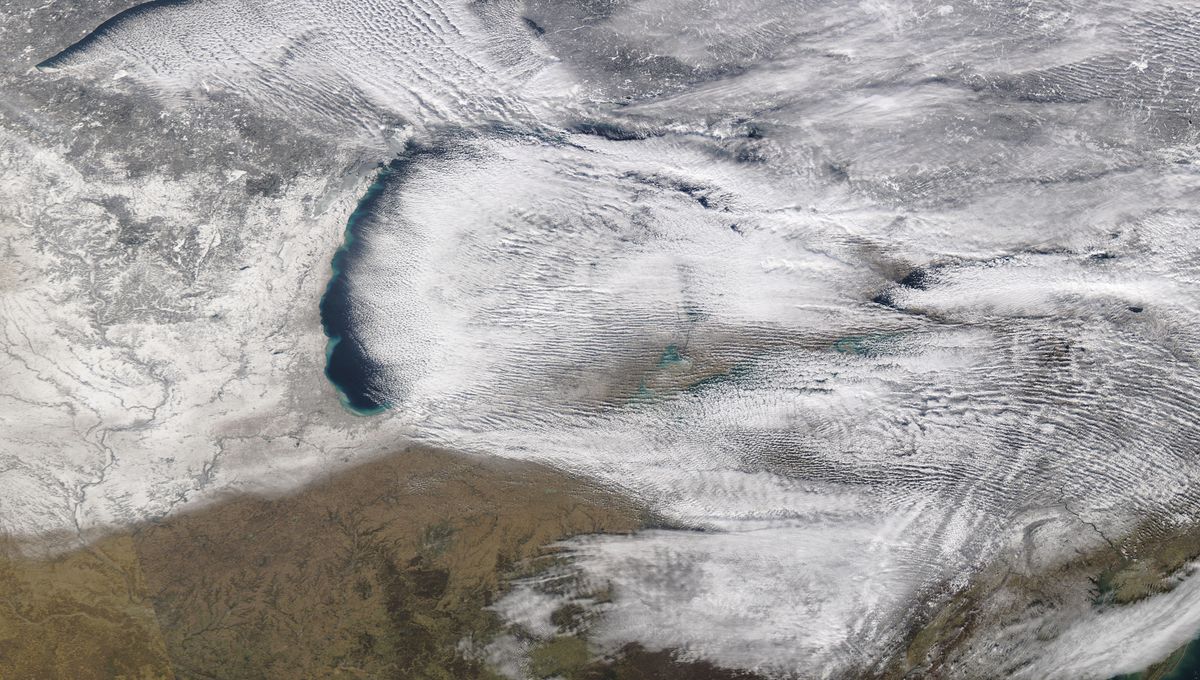
Areas across the northeast US have recently been hit with yet another barrage of heavy snow and blizzard-like conditions, with communities buried and road closures galore. “Pffft”, we hear you say, “Lots of places in the northern hemisphere get snow this time of year.” But this isn’t just any type of snowstorm – this is lake-effect snow.
Lake effect snow, which occurs most often in the late fall and winter, occurs when cold air moves across the relatively warm waters of – you guessed it – a lake, which results in the transfer of warmth and moisture into the atmosphere.
As BBC Weather meteorologist Matt Taylor explains, “Like steam off a hot bath in a cold bathroom, water vapor from the lakes rises [and] condenses into big snow shower clouds. These are then pushed by wind in lines known as cloud streets across the lake and on shore.”
The result of this is heavy snow – and when we say heavy, we mean heavy. During this most recent bout of weather, some places in upstate and western New York had about 90 centimeters (35 inches) of snow dumped on them in a single day.
That’s not even the most they’ve seen this year either; another bout of lake effect snow just after Thanksgiving saw 1.5 meters (4.9 feet) drop down in the village of Copenhagen in just 72 hours. That’s a whole Danny DeVito’s worth of snow (let’s hope he wasn’t nearby). Erie, Pennsylvania, had the most snow in a single day since records began in 1893.
However, this heavy snow also tends to be quite localized; your car could be getting rapidly buried in the driveway whilst your friend a few towns over is enjoying a nice sunny walk. While the physical geography of the land surrounding a lake can play a role in this localization, wind direction is a key component.
“The wind direction dictates where the snow showers will fall. For instance, northerly winds will mean southern shores of a lake will get hit time and again,” Taylor explains. “If direction doesn’t change much then the same areas can bear the brunt and large amounts of snow can build up over time.”
It’s common to see lake-effect snow in regions like the northeast of the US and Canada because they’re near some pretty big bodies of water: the Great Lakes. But what’s up with the record-breaking amount of snow that’s been there seen this year?
According to the Northeast Regional Climate Center, it might have something to do with another kind of climate record; both Lake Erie and Lake Ontario had record-high water surface temperatures this year, after both the preceding winter and fall this year were warmer than average.
Source Link: What Is Lake-effect Snow?